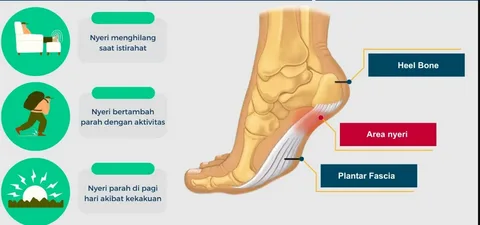Running rewards both body and mind, but it can quietly punish the feet when the wrong shoes get involved. Many runners overlook how vital proper footwear is to maintaining foot health until sharp heel pain starts to appear. Without adequate support, each stride places extra stress on the plantar fascia, the tissue that sustains the arch and absorbs impact across the sole.
Repetitive Heel Impact Strains the Plantar Tissue
Each step during a run sends pressure from the heel up through the leg. Over time, that repetitive stress irritates the plantar fascia—the thick band of tissue running from the heel bone to the toes. Without cushioning and arch support, that tissue must absorb every impact alone, eventually leading to microtears that a plantar fasciitis doctor often identifies as the root cause of the pain.
The damage accumulates subtly. Even runners with strong calves and balanced form are not immune if their shoes lack adequate shock absorption. That strain on the heel and arch can grow worse with longer distances, transforming mild soreness into chronic plantar fasciitis that demands rest and treatment from a plantar fasciitis specialist.
Hard Surfaces Amplify Shock Through the Foot
Concrete and asphalt might seem ideal for maintaining speed, but these surfaces transfer a heavy load back into the foot. Unlike dirt trails or padded tracks, they offer little give under pressure. Over time, runners who train exclusively on hard ground experience increased stress on their plantar fascia because their shoes must absorb the entire impact.
Improper footwear makes this worse. Lightweight or worn-out running shoes with thin midsoles allow shock waves to travel straight to the heel. Once that happens repeatedly, inflammation develops, often prompting athletes to seek guidance from a plantar fasciitis doctor to prevent worsening pain and long-term tissue damage.
Tight Calf Muscles Pull on the Plantar Fascia
The calf and heel are directly connected through the Achilles tendon. If the calf muscles tighten from overuse or lack of stretching, they pull upward on the heel, straining the plantar fascia with every step. Many runners don’t realize that lower leg flexibility plays a major role in foot health until discomfort becomes consistent.
A plantar fasciitis specialist can confirm this chain reaction by checking for tightness in the gastrocnemius and soleus muscles. Over time, this tension limits ankle movement and puts the fascia under constant pressure. Proper stretching routines and footwear that promotes natural motion can relieve that pull and restore balance to the lower leg.
Sudden Directional Shifts Heighten Plantar Tension
Runners who incorporate sprints, agility drills, or trail running face a different kind of risk. Sharp turns and lateral movements twist the plantar fascia, which is designed for forward motion rather than abrupt directional changes. These movements can cause small tears or overstretching at the heel attachment point.
Without shoes that stabilize the heel and midfoot, the strain multiplies. Footwear with proper traction and structure prevents over-rotation and allows the fascia to move naturally. Ignoring this detail often leads to irritation that requires evaluation by a plantar fasciitis doctor, especially if swelling or heel stiffness starts appearing after workouts.
Insufficient Recovery Between Runs Limits Tissue Repair
The plantar fascia needs time to recover, much like muscles do. Runners who increase mileage too quickly or skip rest days risk overloading the connective tissue before it fully heals. This ongoing stress results in inflammation that worsens with each subsequent run.
A plantar fasciitis specialist often notices this in athletes training for marathons or endurance events. Even well-fitted shoes cannot offset inadequate recovery. Regular rest, gentle stretching, and alternating running surfaces can significantly reduce the likelihood of recurring heel pain and allow the fascia to rebuild between sessions.
Excessive Ground Force Absorption Leads to Heel Inflammation
Running creates powerful ground forces that rebound up through the leg. Shoes designed without proper cushioning or arch stability force the heel pad and fascia to absorb most of that impact. Over time, this repetitive stress creates inflammation at the bottom of the heel where the fascia anchors to the bone.
A plantar fasciitis doctor typically sees this type of inflammation in long-distance runners or those who use minimalist shoes without adequate padding. Proper footwear redistributes these forces, preventing the fascia from overworking. Once inflammation begins, reducing impact through better footwear becomes essential for recovery.
Uneven Running Terrain Increases Foot Misalignment
Running on uneven or sloped terrain changes how pressure moves through the foot. Each uneven step can twist or overstretch the plantar fascia, particularly if the runner’s shoes don’t provide stability. Trail runners who rely on flexible but unsupportive footwear may notice sharp heel pain after descending rocky paths or side-sloped surfaces.
A plantar fasciitis specialist understands that improper alignment magnifies this risk. Overpronation or supination on irregular ground causes uneven weight distribution, pulling the fascia unevenly along its length. Choosing supportive shoes with firm midsoles and reinforced arches reduces misalignment and protects the tissue from unnecessary strain.


